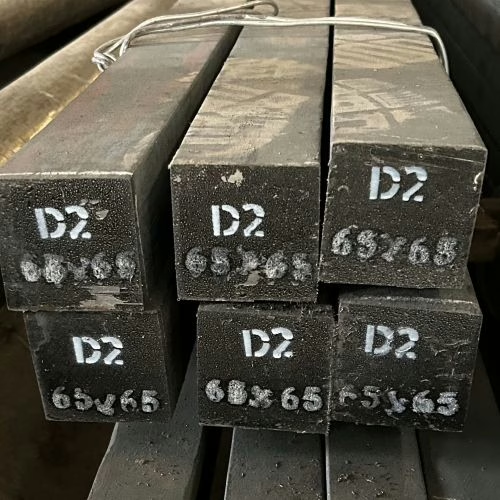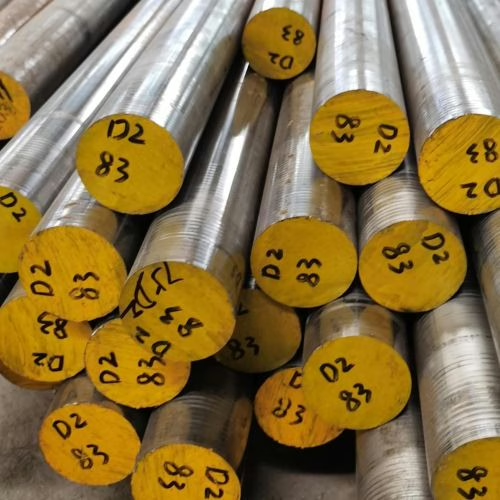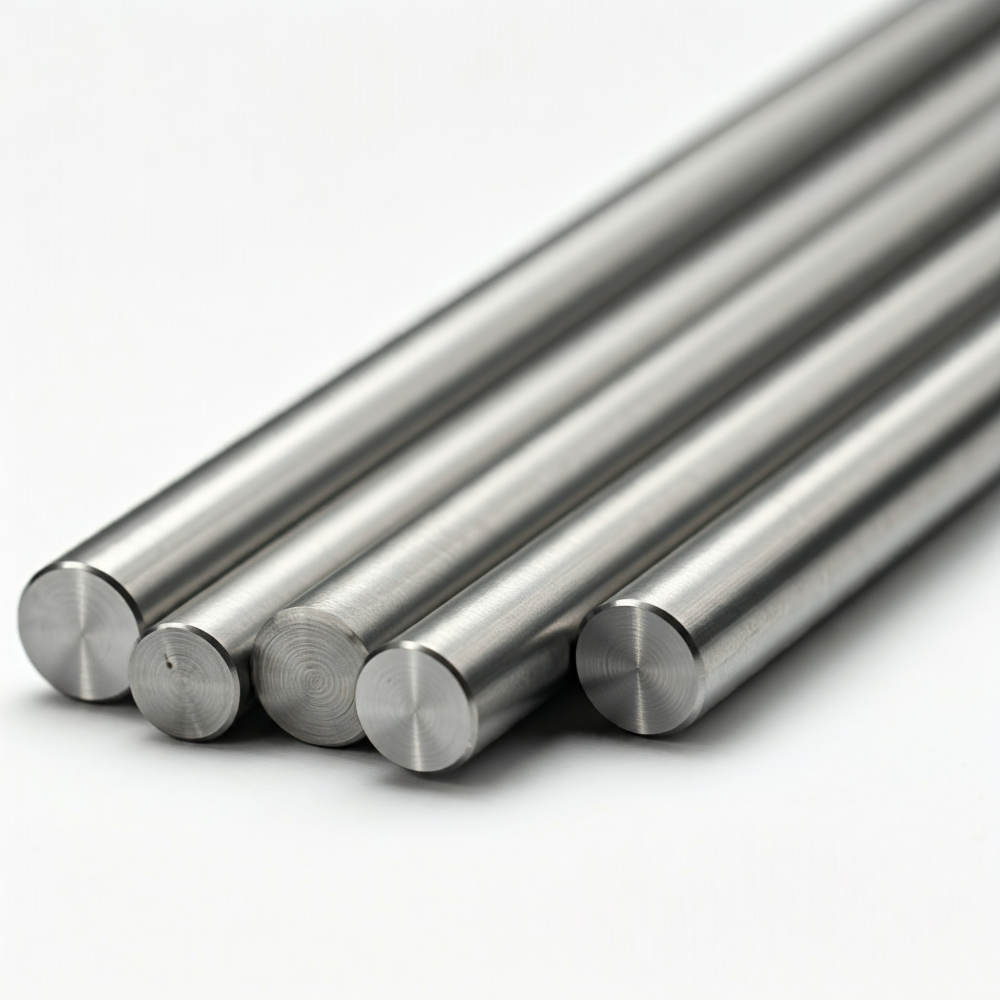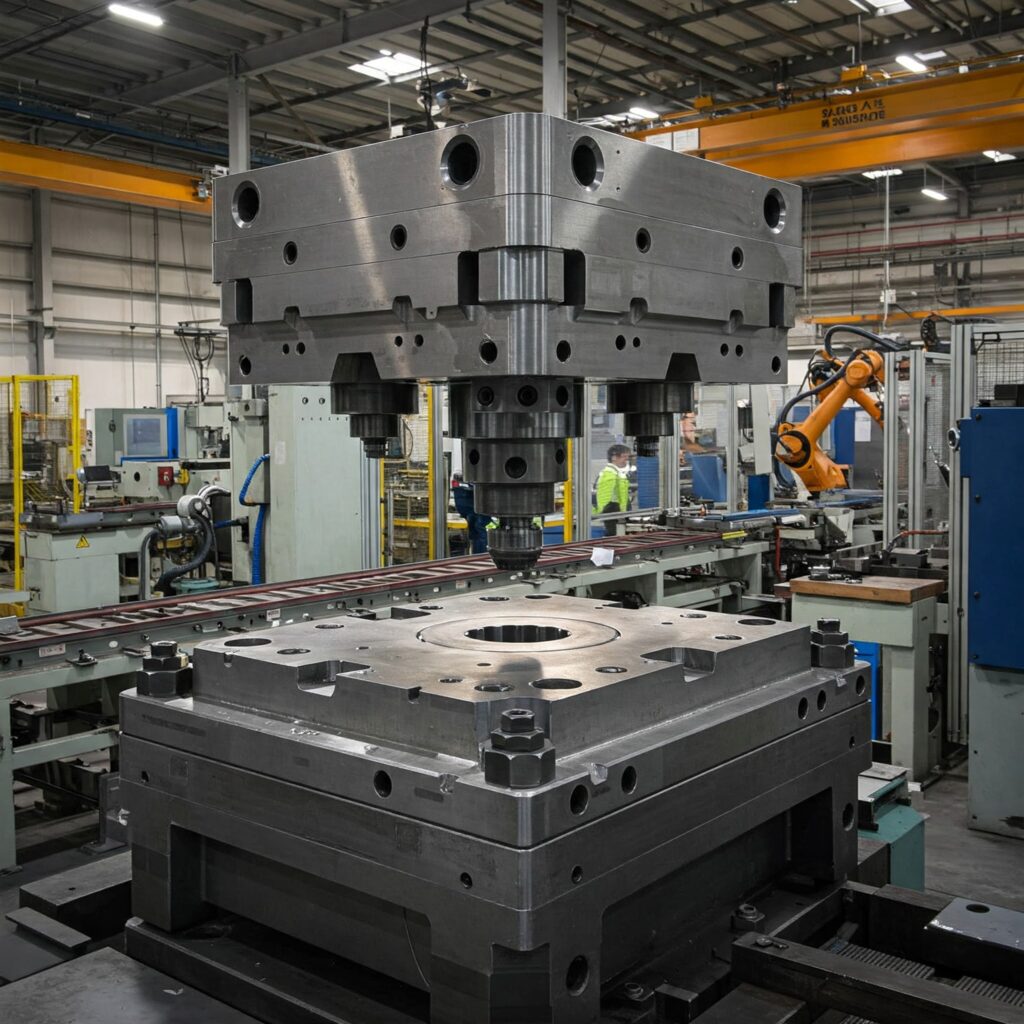AISI D2 tool steel is a high-carbon, high-chromium steel that serves as the cornerstone for numerous demanding industrial applications. With its exceptional wear resistance, high hardness, and dimensional stability, D2 is the material of choice for long-lasting dies, blanking, forming, thread rolling, deep drawing, and shearing tools. However, while increasing the hardness of D2 steel enhances its wear resistance, it also reduces the material’s impact resistance. If not adequately managed, D2 steel may exhibit failure modes such as fracture, chipping, and plastic deformation. This paper presents a detailed metallurgical analysis of common failure mechanisms in D2 tool steel, encompassing various forms, including wear (abrasive and adhesive), fracture (fatigue, brittle, and ductile), and plastic deformation. Additionally, we explore advanced strategies to enhance its service durability, focusing on optimizing heat treatment parameters, controlling microstructure, and employing suitable surface modification techniques.
The Microstructure of D2 Tool Steel
The Foundation of Wear Resistance
D2 tool steel’s exceptional wear resistance stems primarily from its high carbon content (typically 1.40-1.60%) and high chromium content (11.00-13.50%). These alloying elements readily form hard, stable carbides within the steel. The microstructure of D2 contains both primary and secondary carbides. Primary carbides, such as the chromium-rich M7C3 type, form during solidification and are large and massive. Secondary carbides precipitate during solid-state reactions and heat treatment, often appearing as finer spheroidized particles. These undissolved carbides, which can be as hard as or harder than abrasive particles, resist penetration and removal by abrasive agents, significantly contributing to the material’s ability to withstand wear. The wear resistance increases with the amount, size (up to a point comparable to abrasive media), and homogeneous distribution of these hard carbides.
Complementing the carbides is the hard martensitic matrix, the primary constituent of hardened steel. Martensite, a body-centered tetragonal structure, achieves its high hardness due to the supersaturation of carbon in solid solution and a high density of dislocations. This hard matrix effectively holds the wear-resistant carbides in place, further enhancing the overall abrasion resistance. A fully tempered martensite structure with finely dispersed carbides is the goal for optimal properties.
The Source of Brittleness
D2 tool steel exhibits moderate toughness and is prone to brittle fracture and chipping. This is primarily due to the nature and distribution of carbides, as well as retained austenite. This inherent brittleness is largely attributed to the nature and distribution of its carbides and the presence of retained austenite. Large, irregularly shaped, or poorly distributed carbides act as critical stress concentration points within the microstructure. These carbides can serve as initiation sites for cracks, facilitating fracture and reducing the material’s ability to absorb energy before failure. Excessive carbide segregation, appearing as heavy banding or clusters, can contribute to brittle failures and machining problems. Manufacturing processes like hot working can elongate carbides, creating weak planes and anisotropic mechanical behavior, particularly reducing transverse properties. Poor design with sharp corners, notches, or sudden section changes also introduces stress raisers, further promoting cracking during heat treatment or service.
Residual austenite in D2 steel presents another challenge. Due to its higher carbon content, the martensite termination temperature (Mf) often falls below room temperature, causing partial austenite to remain unreacted in the microstructure during quenching. Excess residual austenite reduces the hardness of D2 steel after quenching and compromises dimensional stability. Under stress or during subsequent tempering, it may spontaneously transform into brittle, untempered martensite, causing volume expansion and microcracks or chipping. This transformation introduces additional stresses and significantly diminishes the overall toughness of the tool steel. Therefore, D2 steel typically requires double or triple tempering to stabilize fresh martensite and either transform or stabilize the retained austenite, thereby reducing brittleness and enhancing toughness.
A Forensic Analysis of Common D2 Tool Steel Failure Mechanisms
Harsh operating conditions can cause D2 steel to fail prematurely, potentially shortening its service life and increasing production costs. Common failure modes include Abrasive and Adhesive Wear, Chipping and Gross Fracture, as well as Fatigue Failure from Cyclical Loading.
Abrasive and Adhesive Wear
Abrasive wear is a predominant failure mechanism for D2 tool steel, particularly notable in hot forging, where it contributes to nearly 70% of die failures. The hard carbides in the microstructure of D2 steel are responsible for its high wear resistance. However, if these carbides detach from the tool steel matrix, they act as additional abrasive particles within the wear debris, accelerating the wear process.
Chipping and Gross Fracture (Toughness-Related Failures)
Chipping refers to the occurrence of irregular, small flakes breaking off from the tool’s cutting edge. Gross Fracture refers to the tool experiencing large-scale breakage, where the entire or most of the cross-section breaks off. Both issues represent failures caused by the insufficient toughness of D2 steel. The high hardness and high carbon content of D2 steel inherently make it brittle. The abundance of hard carbides creates weak points within the material. Cracks readily initiate and propagate from these locations, significantly reducing the overall toughness of D2 steel.
Fatigue Failure from Cyclical Loading
In cold forging and stamping operations, D2 dies are continuously subjected to mechanical and thermal stress cycles, making them highly susceptible to fatigue fracture. Fatigue failure is defined as the progressive and localized structural damage that accumulates when a material is subjected to repeated or cyclic loading, even at stress levels significantly below its yield strength.


Advanced Strategies for Enhancing Durability
Optimizing the Heat Treatment Cycle for a Superior Microstructure
Heat treatment is a critical step for achieving the optimal properties of D2 steel and minimizing premature failure. The process comprises three main stages: heating (including preheating and austenitizing), quenching, and tempering.
Preheating ensures even heat distribution and relieves residual stresses from prior processing, thereby reducing the risk of deformation or cracking during subsequent high-temperature stages. Typical preheating conditions for D2 steel involve holding at 1200°F (650°C) for 10 to 15 minutes.
- Austenitizing involves heating the steel to a specific temperature and holding it to dissolve alloy carbides and transform the ferrite-carbide aggregate into austenite. For D2, the recommended austenitizing temperature ranges from 1010 °C to 1024°C (1850°F to 1875°F). It is essential to note that excessively high temperatures can lead to grain coarsening and an increase in residual austenite, thereby compromising toughness and dimensional stability.
- Quenching rapidly cools the steel from the austenitizing temperature to form martensite. D2 is an air-hardening steel, meaning it can form a martensitic structure by cooling in air, which significantly minimizes distortion and dimensional changes compared to oil or water quenching.
- Tempering is a reheating process performed after hardening to increase toughness and relieve internal stresses. For D2, multiple tempering procedures (double or triple) are highly recommended. This multi-stage process helps to transform retained austenite (which can cause dimensional instability and brittleness) into fresh martensite and refines the overall grain structure.
- Cryogenic Treatment, often performed between tempering stages, can further enhance durability. This process, typically involving temperatures as low as -300°F (-184°C), effectively converts remaining retained austenite to martensite and promotes the precipitation of fine carbides.
For detailed information, please refer to How to Properly Heat Treat D2 Steel.
Surface Engineering for Enhanced Performance
Beyond optimizing the bulk microstructure, surface engineering techniques can significantly augment the durability of D2 tool steel, particularly in terms of wear resistance, friction reduction, and galling prevention. These treatments modify the surface and near-surface regions, providing a hard, protective layer that withstands the most destructive forces encountered during operation8486.
- Nitriding is a thermochemical diffusion process that introduces nitrogen atoms into the steel surface, creating a hard, wear-resistant layer. It is particularly beneficial for D2 tool steel due to D2’s excellent resistance to softening at the elevated nitriding temperatures (e.g., gas nitriding at 540°C/1000°F for 12 hours). Nitride layers are thin (typically 0.013 to 0.05 mm) and hard, improving wear resistance without compromising core toughness.
- Physical Vapor Deposition (PVD) Coatings involve depositing thin layers (1 to 6 µm) of hard ceramic materials such as titanium nitride (TiN), titanium carbonitride (TiCN), titanium aluminum nitride (TiAlN), or chromium nitride (CrN). PVD is a low-temperature process (200-500°C), which minimizes the tempering effect on the substrate, making it suitable for applying to finished, hardened D2 tools. These coatings dramatically increase wear resistance, reduce friction, and improve resistance to welding of chips, significantly extending tool life. For D2, specific recommendations include PVD TiCN, AlTiN, and TiCrN for blanking/trimming and forming/drawing applications. However, coatings require a properly prepared, firm substrate, and issues like flaking can occur if residual stresses from surface features are high.
- Chemical Vapor Deposition (CVD) Coatings can also deposit hard layers, such as TiN, TiC, and Al2O3. These are typically applied at higher temperatures (e.g., 900-1010°C for TiC). While offering excellent wearability, CVD coatings may necessitate post-coating heat treatment if distortion is a concern.
- Boriding enhances both hardness and wear resistance by diffusing boron atoms into the surface of the tool steel, forming an iron boride layer. This treatment is often applied to D2 tool steels that have already undergone hardening heat treatment.
Conclusion
While D2 tool steel inherently possesses certain limitations, particularly its lower toughness compared to other grades, a scientific and rigorous approach to material selection, precise heat treatment, and thoughtful application remains the most effective strategy for maximizing its utility. By meticulously managing these critical factors, the service life of D2 tools can be significantly extended, and their performance optimized to meet the severe demands of their intended service environments effectively.
If you have any unresolved issues regarding D2 steel or wish to purchase it, please complete the form below to contact us.


